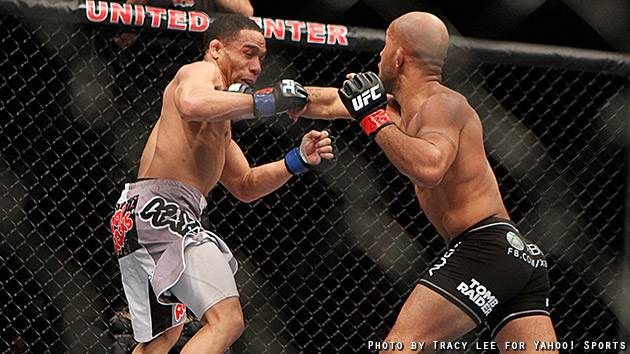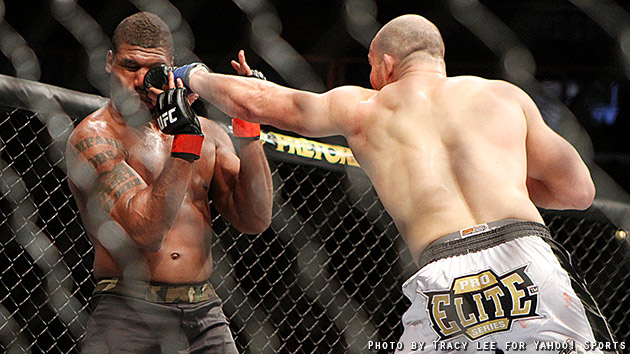[ | E-mail |
Contact: Gary Steinman
gary.steinman@touro.edu
646-981-4604
Touro College Of Osteopathic Medicine
NEW YORK, NY A New York-based physician-researcher from Touro College of Osteopathic Medicine, best known for his research into fertility and twinning, has uncovered a potential connection between autism and a specific growth protein that could eventually be used as a way to predict an infant's propensity to later develop the disease. The protein, called insulin-like growth factor (IGF), is especially involved in the normal growth and development of babies' brain cells. Based on findings of prior published studies, Touro researcher Gary Steinman, MD, PhD, proposes that depressed levels of this protein in the blood of newborns could potentially serve as a biomarker for the later development of autism. However, this connection, described below in greater detail, has never been directly studied. Steinman presents his exciting theory in the journal Medical Hypotheses (article in press), available online today, January 31.
IGF stimulates special cells in the brain to provide an essential insulating material, called myelin, around the developing nerves that is needed to efficiently transmit important messages about everything the brain controls from physical functions such as movement to mental functions such as sensory perception, thinking and emotions. In the developing fetal and pediatric brain, myelin is also important for nerve fibers in one area of the brain to form proper pathways to other regions, allowing the body to hone functions over time. Insufficient IGF results in insufficient insulating material, as has been seen in brain biopsies of autistic individuals, and may impede proper pathway development. Steinman is proposing that this potential relationship between neonatal IGF levels and autism be directly studied.
In the United States, autism is currently reported in 1 in 88 live births about 125 new cases every day and it is four times more common in boys than in girls. Women who have given birth to an autistic child have approximately a one-in-five chance of having another. The impact that this life-long disease has on children, families, and finances is enormous. An affected child could add as much as $3 million in lifetime medical expenses over an unaffected child.
"Autism is on the rise, especially in the last two decades either because of environmental factors, expanded diagnostic criteria, or both. Yet almost nothing is currently known about the predisposing molecular and histological changes that differentiate a newborn destined to be neurologically normal from an autistic one," said Steinman.
Because no effective treatment or prevention for autism exists, research examining Steinman's idea is critical, as it may hold the key to understanding the cause of this often devastating illness. In his article, Steinman proposes a study to investigate this hypothesis, and if this study supports his theory that identification of reduced IGF at birth is later followed by the appearance of autistic characteristics, then the subsequent development of a simple biomarker blood test is equally critical.
In the proposed study, a sample of umbilical cord blood would be collected immediately after birth to measure IGF. Alternatively, a routine heel-stick blood sample might be used, as these are already collected from newborns within a day or two after birth to test for inborn errors of metabolism in most U.S. hospitals. Then the data collected at birth would be compared with the neurologic evaluation of the baby at 18 to 36 months of age.
If successful, the next phase of proposed research would entail detecting depressed IGF levels in amniotic fluid during the second trimester of pregnancy. This might be followed by supplementation of the growth factor before symptoms of autism develop.
"Further investigation into whether pharmaceutical treatment in the early postnatal period of newborns with a suspicion of a tendency of developing autism could reverse the effects of having had pathologically low levels of IGF while in utero and reduced IGF in their umbilical cord blood at birth would be a next step," said Steinman. Potential IGF-raising therapeutic agents that may be considered, which would all require caution, include Prozac, Copaxone, Increlex, and recombinant human IGF. Steinman also said that as a natural source of IGF, breast milk may also be an important consideration; an increased duration of breastfeeding is associated with a decreased incidence of autism.
The research into this theory could present an opportunity for public-private collaboration between academia and industry. In fact, if corroborated, Steinman's theory could also point to potential risks to pregnant women and women of child-bearing age of drugs able to lower IGF levels, of which there are several Somavert, Sandostatin, Parlodel, and several experimental IGF receptor antagonists.
Additionally, if Steinman's theory is confirmed by the proposed, or any related, studies, a search of gene variations could then be conducted in autistic children. This kind of information might allow genetic risk determinations in the preconception period, similar to other forms of genetic testing and counseling during the family planning stages. Genetic testing and counseling for autism may be especially helpful to couples who start families later in life. Newborn levels of IGF are inversely proportional to parental age, and older mothers and fathers have a higher risk of conceiving children who will later develop symptoms of autism.
In developing his hypothesis and proposed investigation, Steinman examined IGF research to date in the areas of genetics, intrauterine environments, postpartum factors, and nervous system development, as well as a few other related factors. "We believe there's a good chance this theory will be validated, but much work remains. My collaborators and I are excited to have identified this potential connection and hope it leads not only to the discovery of the cause of autism but also a way to detect it early, treat it, and ultimately prevent it," said Steinman.
###
This study was funded by the Touro College Office of Sponsored Programs and the Israel Psychobiologic Fund.
Steinman G, Mankuta D. Insulin-like growth factor and the etiology of autism. Med Hypotheses. 2013 (in press). Epub 2013 January 31.
?
AAAS and EurekAlert! are not responsible for the accuracy of news releases posted to EurekAlert! by contributing institutions or for the use of any information through the EurekAlert! system.
[ | E-mail |
Contact: Gary Steinman
gary.steinman@touro.edu
646-981-4604
Touro College Of Osteopathic Medicine
NEW YORK, NY A New York-based physician-researcher from Touro College of Osteopathic Medicine, best known for his research into fertility and twinning, has uncovered a potential connection between autism and a specific growth protein that could eventually be used as a way to predict an infant's propensity to later develop the disease. The protein, called insulin-like growth factor (IGF), is especially involved in the normal growth and development of babies' brain cells. Based on findings of prior published studies, Touro researcher Gary Steinman, MD, PhD, proposes that depressed levels of this protein in the blood of newborns could potentially serve as a biomarker for the later development of autism. However, this connection, described below in greater detail, has never been directly studied. Steinman presents his exciting theory in the journal Medical Hypotheses (article in press), available online today, January 31.
IGF stimulates special cells in the brain to provide an essential insulating material, called myelin, around the developing nerves that is needed to efficiently transmit important messages about everything the brain controls from physical functions such as movement to mental functions such as sensory perception, thinking and emotions. In the developing fetal and pediatric brain, myelin is also important for nerve fibers in one area of the brain to form proper pathways to other regions, allowing the body to hone functions over time. Insufficient IGF results in insufficient insulating material, as has been seen in brain biopsies of autistic individuals, and may impede proper pathway development. Steinman is proposing that this potential relationship between neonatal IGF levels and autism be directly studied.
In the United States, autism is currently reported in 1 in 88 live births about 125 new cases every day and it is four times more common in boys than in girls. Women who have given birth to an autistic child have approximately a one-in-five chance of having another. The impact that this life-long disease has on children, families, and finances is enormous. An affected child could add as much as $3 million in lifetime medical expenses over an unaffected child.
"Autism is on the rise, especially in the last two decades either because of environmental factors, expanded diagnostic criteria, or both. Yet almost nothing is currently known about the predisposing molecular and histological changes that differentiate a newborn destined to be neurologically normal from an autistic one," said Steinman.
Because no effective treatment or prevention for autism exists, research examining Steinman's idea is critical, as it may hold the key to understanding the cause of this often devastating illness. In his article, Steinman proposes a study to investigate this hypothesis, and if this study supports his theory that identification of reduced IGF at birth is later followed by the appearance of autistic characteristics, then the subsequent development of a simple biomarker blood test is equally critical.
In the proposed study, a sample of umbilical cord blood would be collected immediately after birth to measure IGF. Alternatively, a routine heel-stick blood sample might be used, as these are already collected from newborns within a day or two after birth to test for inborn errors of metabolism in most U.S. hospitals. Then the data collected at birth would be compared with the neurologic evaluation of the baby at 18 to 36 months of age.
If successful, the next phase of proposed research would entail detecting depressed IGF levels in amniotic fluid during the second trimester of pregnancy. This might be followed by supplementation of the growth factor before symptoms of autism develop.
"Further investigation into whether pharmaceutical treatment in the early postnatal period of newborns with a suspicion of a tendency of developing autism could reverse the effects of having had pathologically low levels of IGF while in utero and reduced IGF in their umbilical cord blood at birth would be a next step," said Steinman. Potential IGF-raising therapeutic agents that may be considered, which would all require caution, include Prozac, Copaxone, Increlex, and recombinant human IGF. Steinman also said that as a natural source of IGF, breast milk may also be an important consideration; an increased duration of breastfeeding is associated with a decreased incidence of autism.
The research into this theory could present an opportunity for public-private collaboration between academia and industry. In fact, if corroborated, Steinman's theory could also point to potential risks to pregnant women and women of child-bearing age of drugs able to lower IGF levels, of which there are several Somavert, Sandostatin, Parlodel, and several experimental IGF receptor antagonists.
Additionally, if Steinman's theory is confirmed by the proposed, or any related, studies, a search of gene variations could then be conducted in autistic children. This kind of information might allow genetic risk determinations in the preconception period, similar to other forms of genetic testing and counseling during the family planning stages. Genetic testing and counseling for autism may be especially helpful to couples who start families later in life. Newborn levels of IGF are inversely proportional to parental age, and older mothers and fathers have a higher risk of conceiving children who will later develop symptoms of autism.
In developing his hypothesis and proposed investigation, Steinman examined IGF research to date in the areas of genetics, intrauterine environments, postpartum factors, and nervous system development, as well as a few other related factors. "We believe there's a good chance this theory will be validated, but much work remains. My collaborators and I are excited to have identified this potential connection and hope it leads not only to the discovery of the cause of autism but also a way to detect it early, treat it, and ultimately prevent it," said Steinman.
###
This study was funded by the Touro College Office of Sponsored Programs and the Israel Psychobiologic Fund.
Steinman G, Mankuta D. Insulin-like growth factor and the etiology of autism. Med Hypotheses. 2013 (in press). Epub 2013 January 31.
?
AAAS and EurekAlert! are not responsible for the accuracy of news releases posted to EurekAlert! by contributing institutions or for the use of any information through the EurekAlert! system.
Source: http://www.eurekalert.org/pub_releases/2013-01/tcoo-rup013113.php
roy williams matt lauer divine mercy chaplet albert pujols the shining mariano rivera mariano rivera



